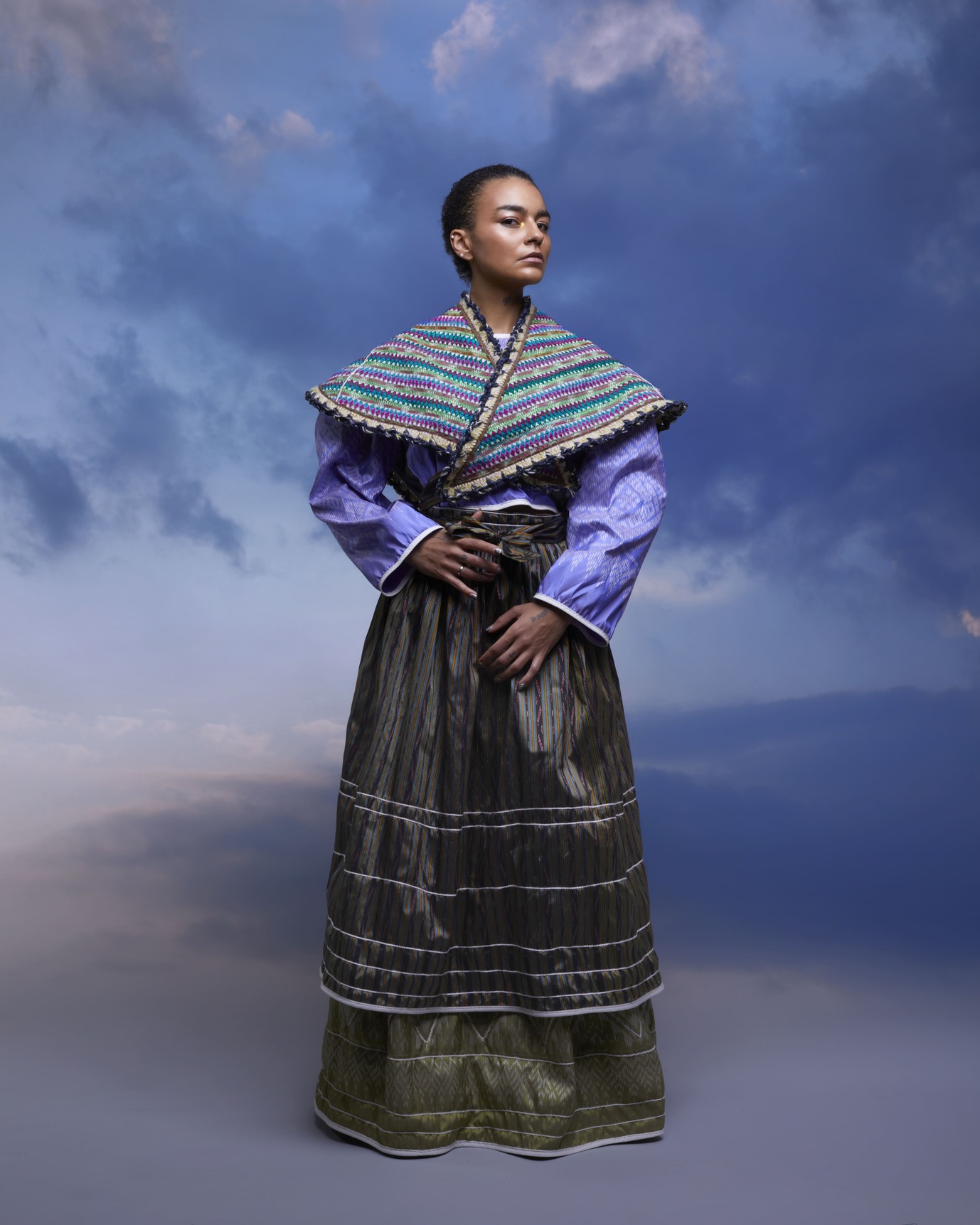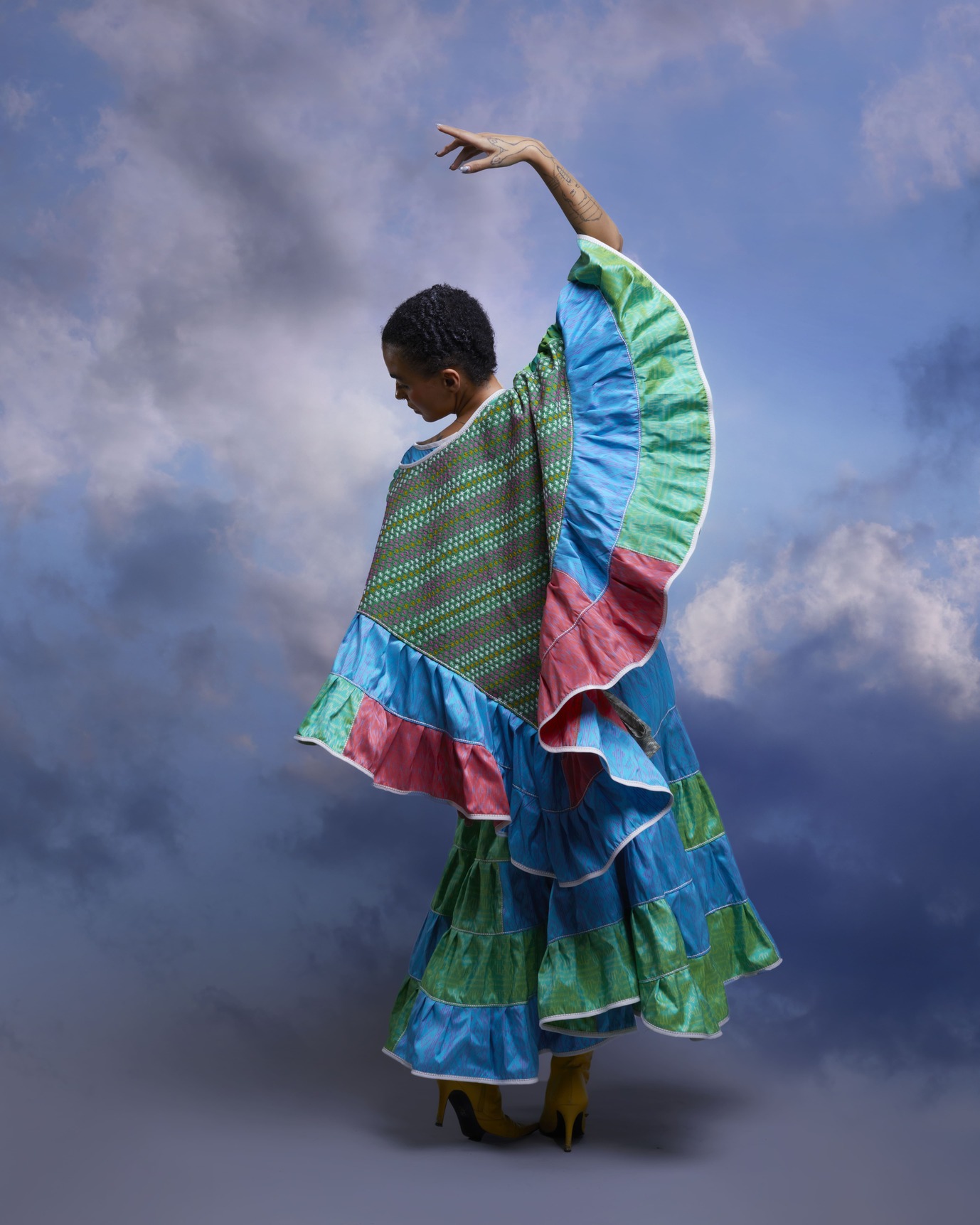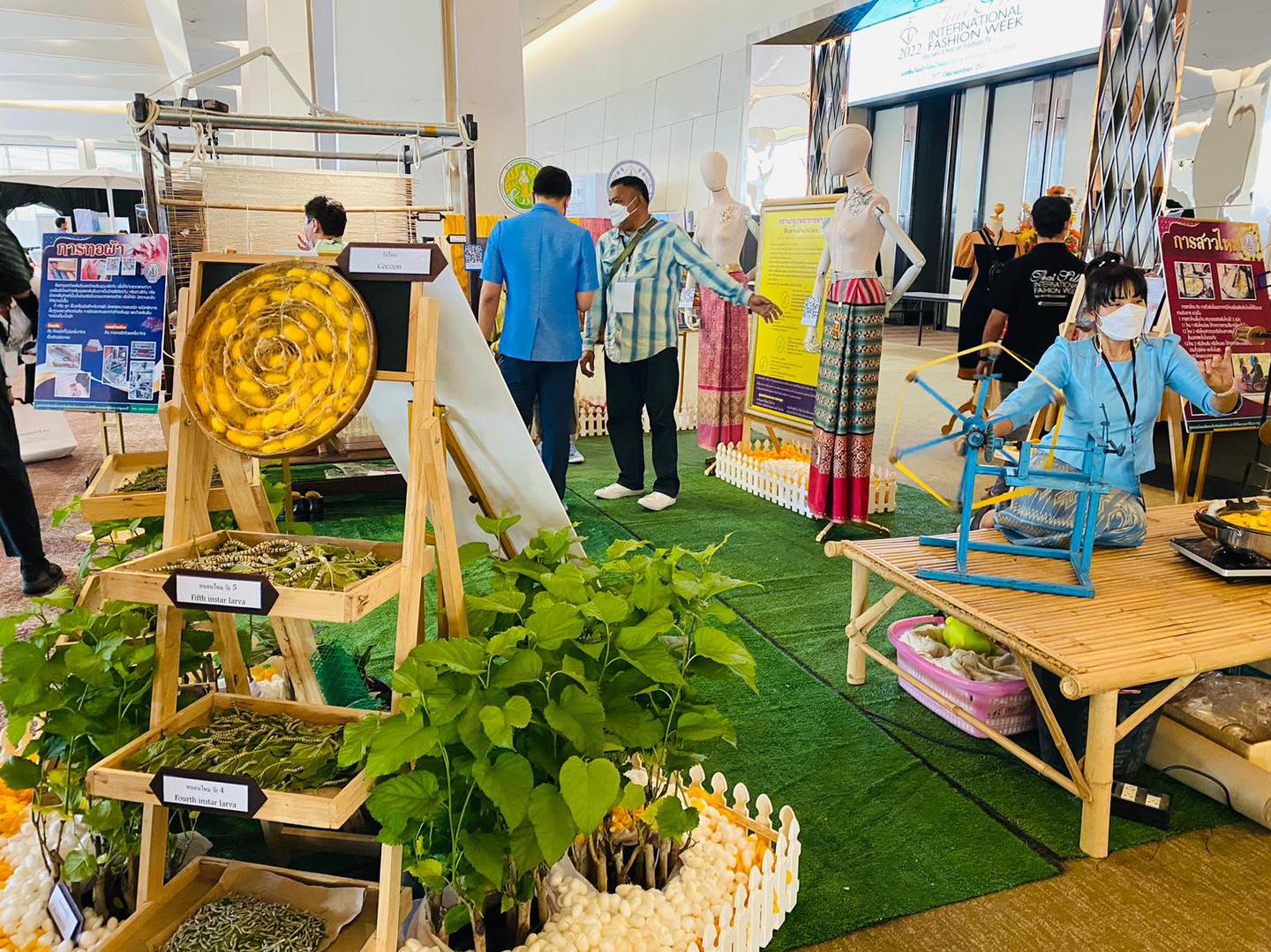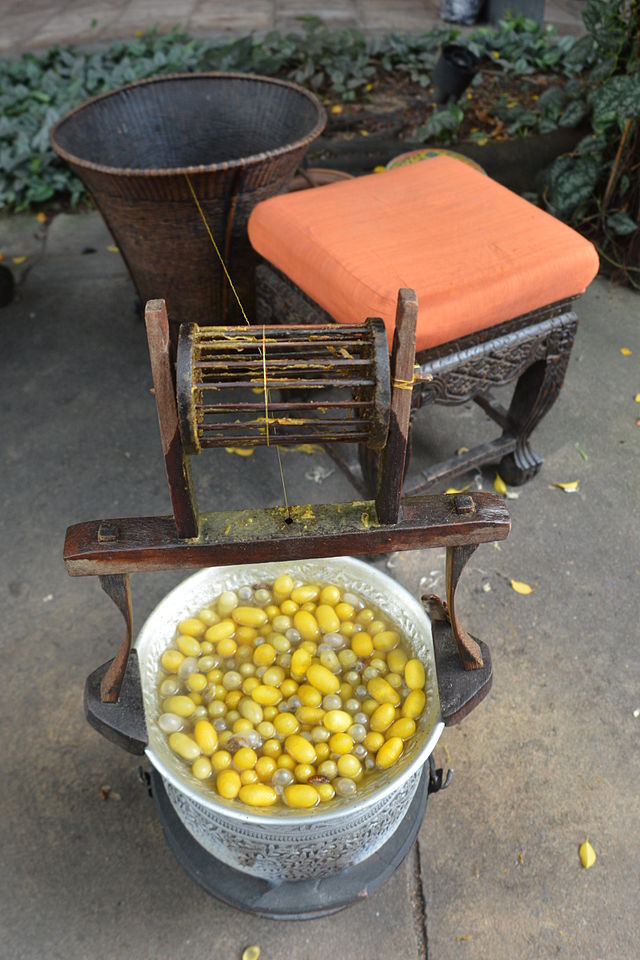Thai Silk: A Tapestry of Sustainability and Tradition
Thai Silk weaves a spellbinding tale of beauty, tradition, and harmony with nature. Born from the delicate hands of skilled artisans, this luxurious fabric captivates with its intricate patterns and shimmering elegance. More than a mere textile, Thai Silk represents the heartbeat of a nation, contributing to its cultural legacy and economy while championing sustainable practices.
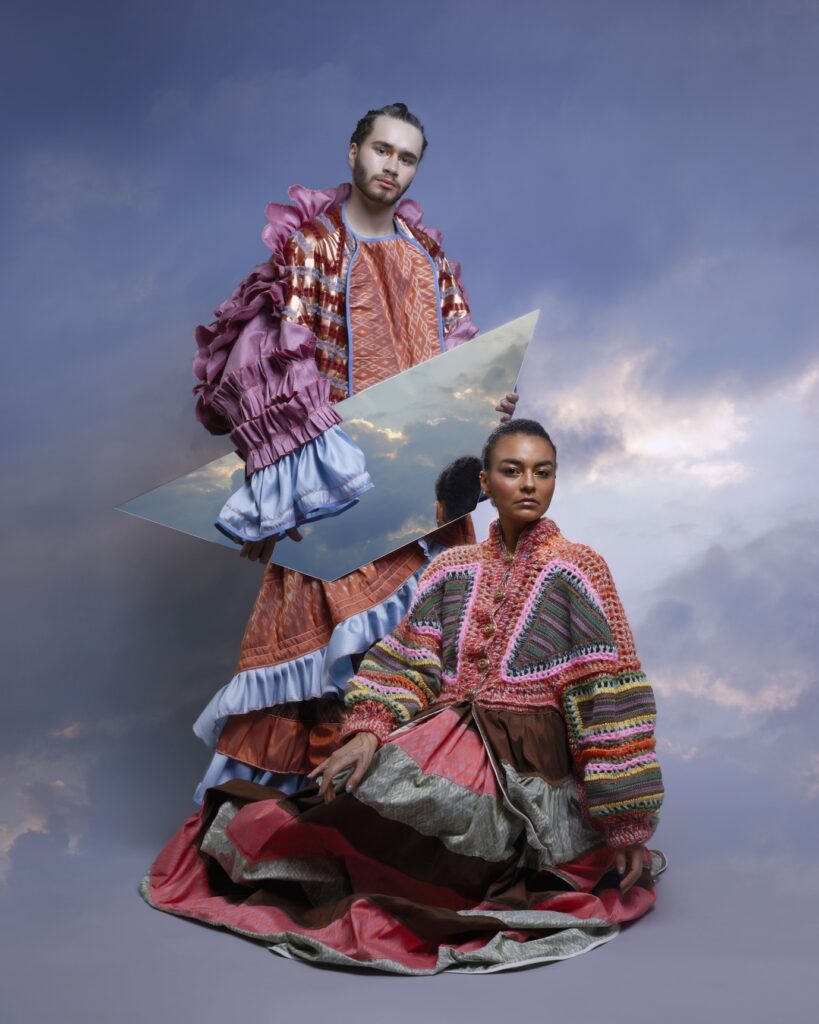
photography by Robert Bartholot
Embark with us on an odyssey into the world of Thai Silk – a realm where ancient handcraft meets modern sensibilities, and where nature and tradition intertwine to create sustainable opulence.

The History of Thai Silk: A Silken Saga
Thai Silk has a rich and vibrant history dating back over 3,000 years to the ancient city of Ban Chiang. This remarkable legacy has witnessed the ebb and flow of empires, the rise and fall of civilizations, and the ever-changing tastes of fashion.

In its early days, skilled Siamese artisans nurtured silkworms and painstakingly crafted silk. However, the Thai royal court‘s preference for luxurious Chinese imports hindered the growth of the local silk industry, restricting its reach to the rural villages.
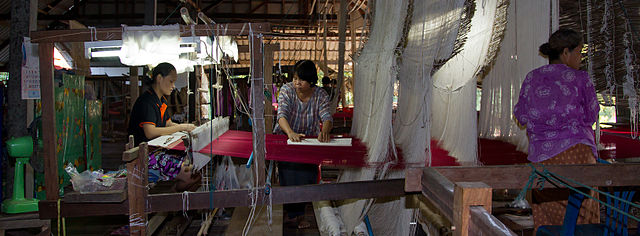
JJ Harrison (https://www.jjharrison.com.au/
In the 20th century, the fate of Thai Silk changed dramatically thanks to Jim Thompson, a former OSS officer who fell in love with Thailand after World War II. With a flair for entrepreneurship, Thompson recognized the untapped potential of Thai Silk and seized the opportunity to reinvigorate the industry.

Olena Zakharian
Thompson’s savvy marketing strategies catapulted Thai Silk onto the international stage, garnering attention from fashion houses, celebrities, and even royalty. He collaborated with local weavers to create distinctive “Thai” patterns that captivated the world with their bold colors and intricate designs.

JJ Harrison (https://www.jjharrison.com.au/
Today, Thai Silk stands as a proud testament to the nation’s cultural heritage, resilience, and commitment to sustainability. It remains a beloved fabric for both traditional attire and modern fashion, enchanting people worldwide with its timeless beauty and enduring charm.

Traditional Uses: Silken Strands of Culture and Heritage
Thai Silk’s allure is intricately woven into the fabric of Thai culture. Its exceptional beauty and craftsmanship are the result of time-honored handloom techniques, passed down through generations of skilled artisans.

JJ Harrison (https://www.jjharrison.com.au/
The use of Thai Silk in traditional clothing is a testament to its versatility and cultural significance. From royal courts to humble rural homes, Thai Silk’s presence is felt across the social spectrum.
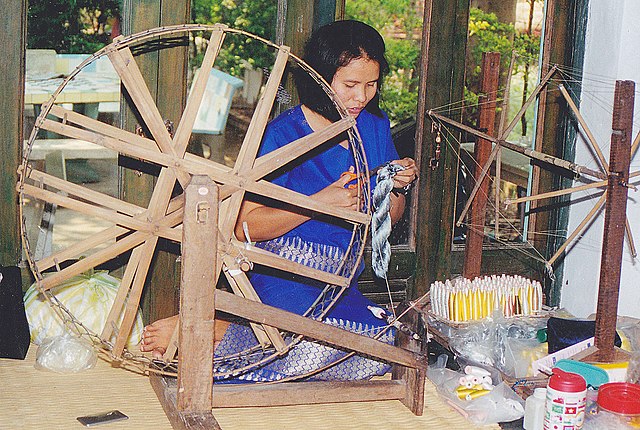
Peter van der Sluijs
In royal settings, Thai Silk was often used to create luxurious garments that signified nobility and prestige. The traditional Chut Thai, comprising a Sabai (shawl) and Chong Kraben (wrapped trousers), adorned members of the royal court, showcasing intricate patterns and vibrant colors that accentuated their status. Additionally, the Chakkraphat Phra Ratcha Niyom, a variant of the Chakkraphat, featured a richly decorated sabai draped over the shoulder, reflecting the royalty’s opulence.
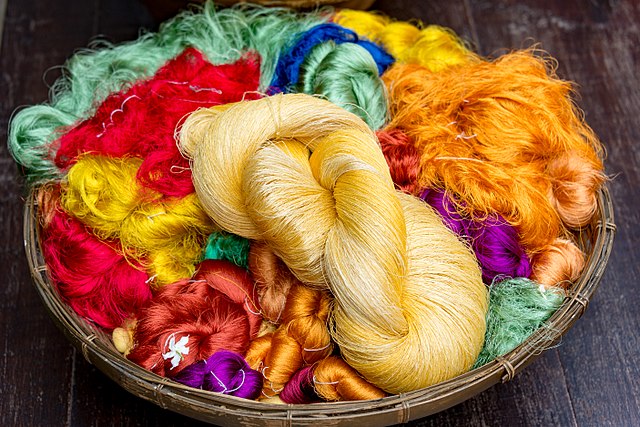
Hanks of dyed silk thread at the Jim Thompson House, Bangkok, xiquinhosilva from Cacau
In more modest contexts, Thai Silk was used to fashion everyday garments such as the Phasin, a long skirt worn by Thai women. The Phasin is typically handwoven with elaborate motifs, reflecting the wearer’s regional identity and personal style. Similarly, the Pha Kao Ma, a versatile and multifunctional checkered scarf, is worn by Thai men for various occasions – as a headwrap, sunshade, belt, or even a sling to carry items.
The production of Thai Silk not only sustains the livelihoods of rural communities and small-scale farmers but also safeguards the country’s unique cultural heritage. As we embrace the beauty and versatility of Thai Silk, we pay tribute to the generations of weavers who have skillfully interlaced their artistry and passion into every silken strand.
The Craft: From Cocoon to Loom
The silk production process is a delicate balance of nature’s beauty and human artistry. It begins with the humble silk moth laying its eggs, which later hatch into caterpillars. These caterpillars feast on a diet of mulberry leaves, growing an incredible 10,000 times their original weight within 35 days. These sensitive creatures require stable environmental conditions, as noise, temperature fluctuations, and odors can adversely affect them.
Thai Silk International Fashion Week, December 2022
As the caterpillar reaches maturity and transforms into a pupa, it starts spinning its cocoon with a silk fibroin protein. This protein is combined with a gummy substance called sericin, forming a compound liquid that solidifies upon contact with air to create a continuous filament. Over the course of 2-3 days, the silkworm spins approximately 1.5 km of filament, enclosing itself within the cocoon.
The transformation complete, the moth is ready to emerge. However, to preserve the silk, the cocoons are carefully heated, ensuring the silk can be harvested while still retaining some transmutation in the moth for breeding purposes.

The silk then undergoes a process known as degumming, where the sericin proteins are gently removed to reveal the lustrous silk fibers beneath. These fibers are dyed with natural or chemical dyes, embracing a spectrum of colors before being skillfully woven on handlooms. This intricate dance of the loom gives rise to the iconic patterns that distinguish Thai Silk, a testament to the harmony between nature and human craftsmanship.

Thai Silk: A Pillar of the Economy
More than just a cultural emblem, Thai Silk underpins Thailand’s economy. The fabric graces industries such as fashion, textiles, and tourism, bolstering small-scale farmers and rural communities.

Thai Silk International Fashion Week, Tata Christiane Show and photography by Pierre Redon
From high-end fashion houses to home decor, this exquisite fabric has been an integral part of Thai culture for centuries and continues to be highly prized in the fashion industry.
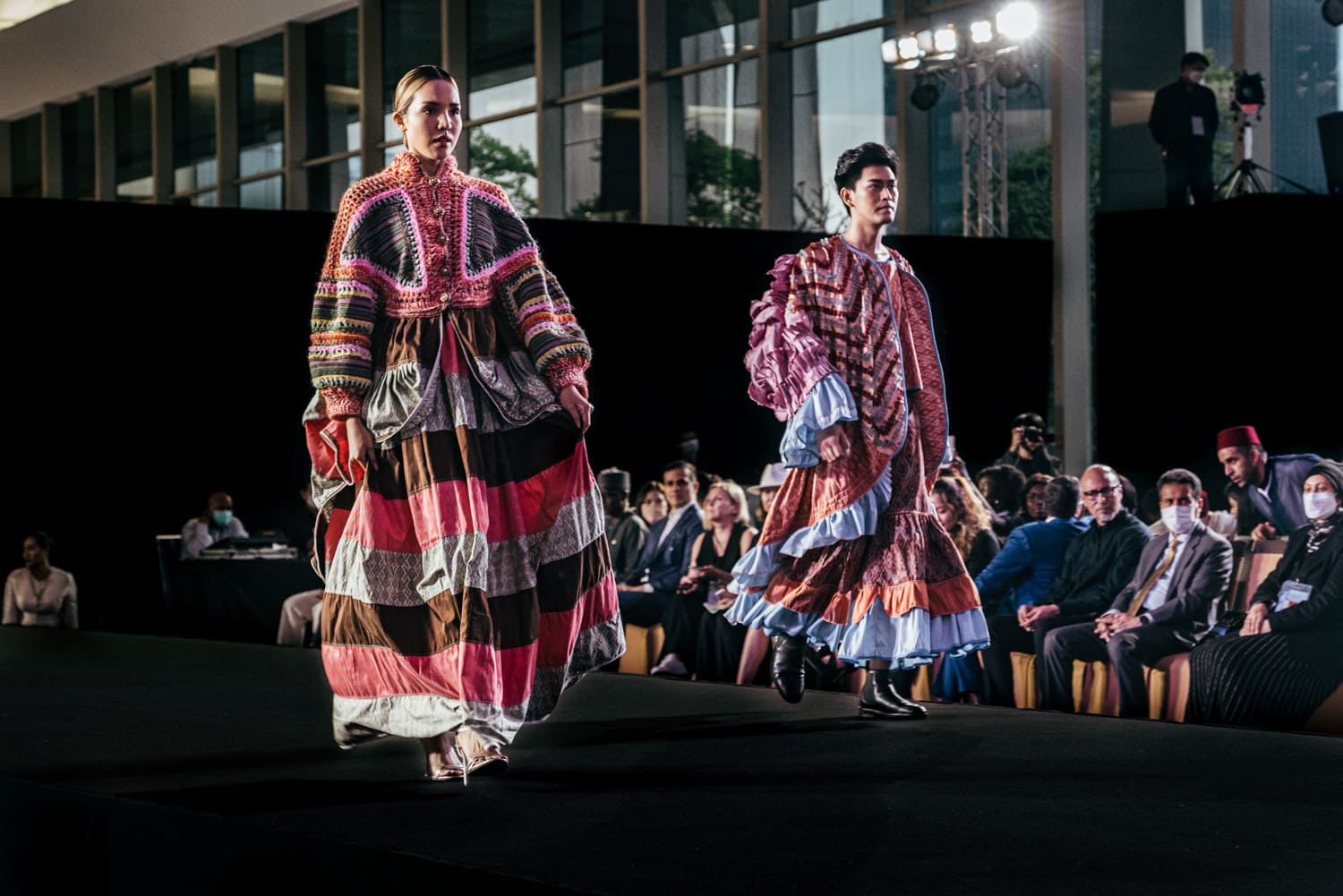
In 2021, Thailand’s exports of silk amounted to US$10.31 million, as reported by the United Nations COMTRADE database on international trade. The fabric represents a vital lifeline for rural communities, weaving prosperity and cultural heritage preservation.
The Green Sheen: Thai Silk as a Sustainable Textile
The enchantment of Thai silk extends beyond its mesmerizing appearance; when crafted mindfully, it emerges as one of the most eco-friendly textiles in existence. The fabric’s organic production process and biodegradable nature render it a conscious choice for those attuned to the environment.
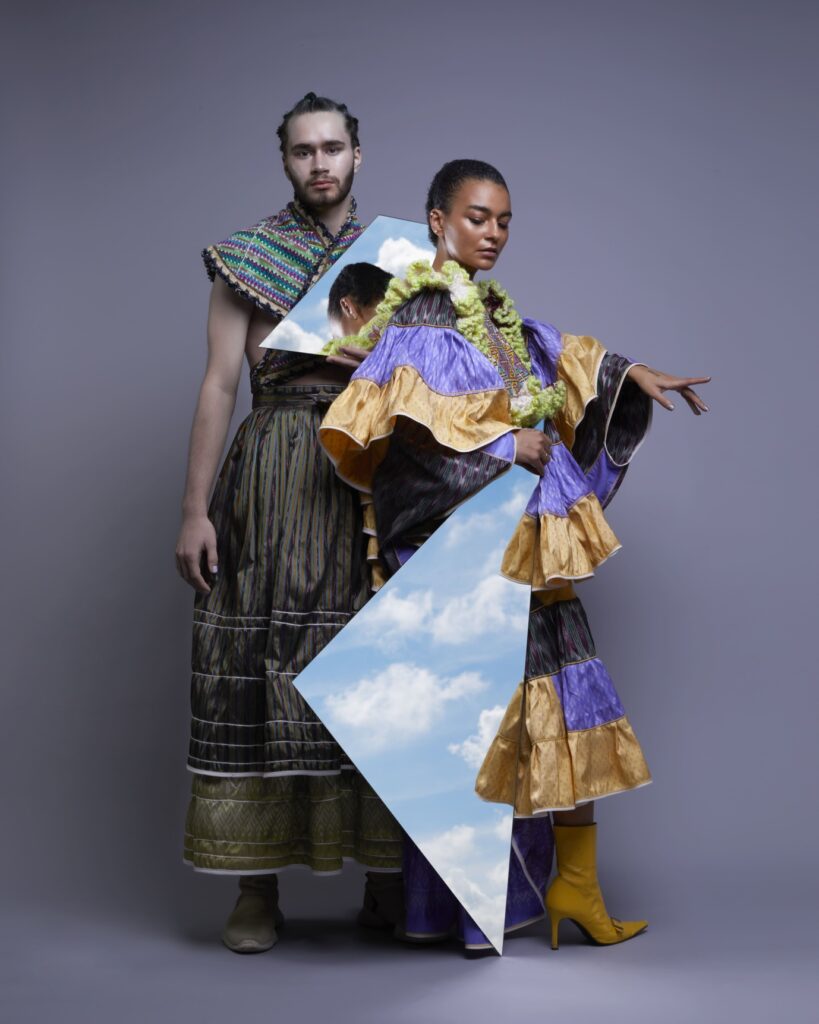
The commitment of Thai silk to sustainability manifests in numerous facets of its creation. Cultivating mulberry trees, silk farmers partake in reforestation endeavors and the capture of atmospheric carbon dioxide. Moreover, sericulture demands only a modest amount of water, alleviating pressure on this indispensable resource.
Furthermore, innovation in Thai Silk production has led to the use of eco-friendly dyes and water-efficient practices, further lessening its environmental impact.
Of course, like many other industries in fashion, silk production can have its pitfalls, such as the use of synthetic pesticides, fertilizers, and chemical dyes. Labor exploitation and unsafe working conditions may also arise.

By supporting producers who use sustainable practices, such as non-toxic dyes and low-impact cultivation methods, consumers can help minimize the environmental footprint of the silk industry. Additionally, by choosing silk products made by small, rural communities that practice traditional weaving techniques, we contribute to the preservation of local cultures and provide economic opportunities for artisans.
Embracing Ethical Alternatives: The Rise of Peace Silk

Another major concern for many consumers is the practice of killing silkworms to obtain their cocoons. Many people consider this practice to be inhumane and unethical, as it involves taking the lives of living beings. As a result, there has been an increased demand for “peace silk” or “ahimsa silk” which is made without harming or killing silkworms. These ethical alternatives are gaining popularity among consumers who prioritize animal welfare and sustainability in their purchasing decisions.

In conventional silk production, silkworms are boiled or stifled inside their cocoons, resulting in a single long filament. In contrast, Peace Silk or Ahimsa Silk offers an ethical alternative that allows the moths to complete their life cycle without harm. By choosing ethically-produced silk, consumers can contribute to a more humane and environmentally-friendly industry.

Eco-Friendly Innovations: The Future of Silk Dyeing
Innovations in the silk industry are ushering in eco-friendly dyeing methods. Researchers have developed techniques for silkworms to directly spin colored silk cocoons by modifying their diet with special dye formulations. This groundbreaking approach eliminates the need for additional dyeing processes and resource consumption, like water, energy, and chemicals.
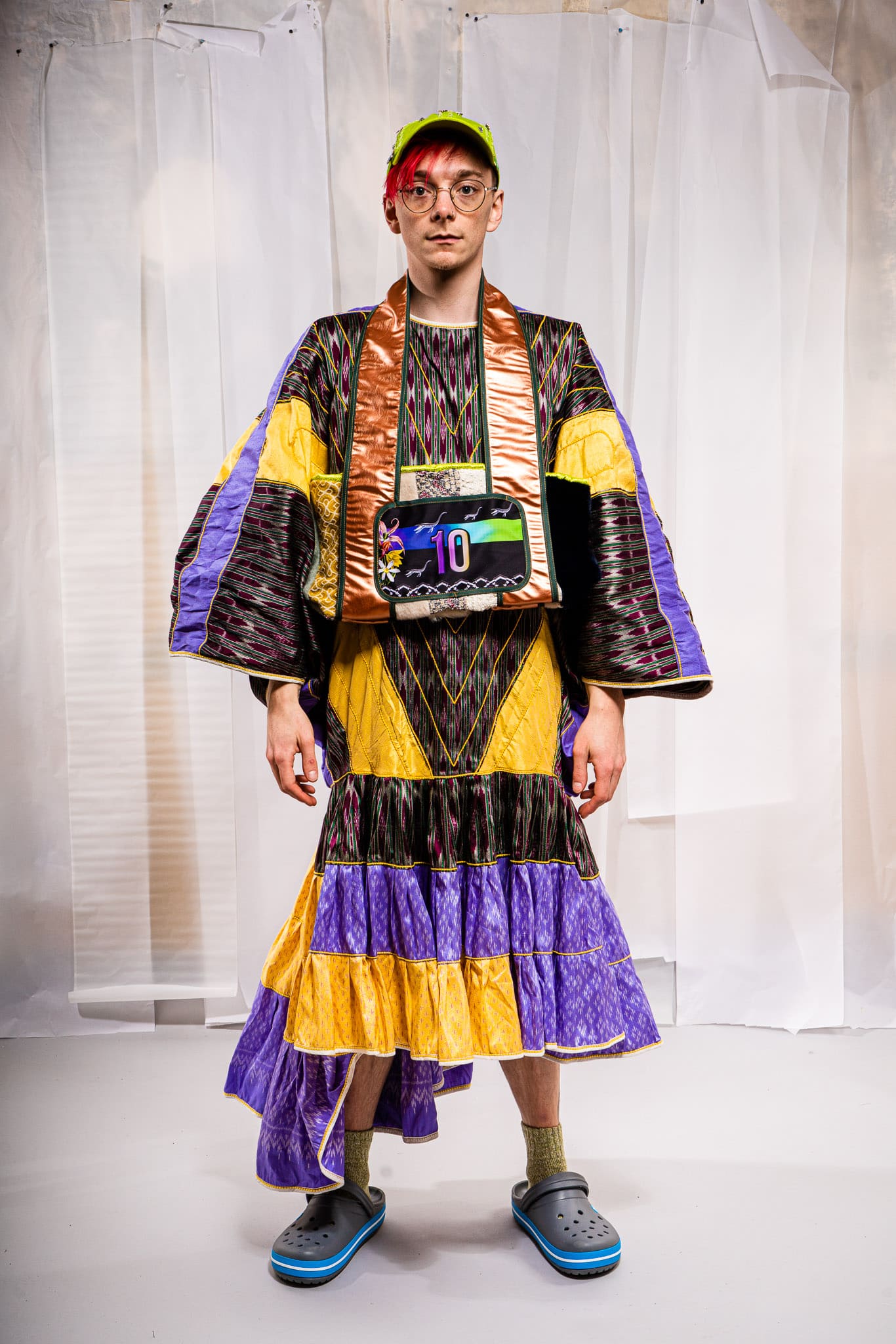
Photography by Valquire Veljkovic
Scientists have tested various dyes, with Rhodamine B showing success in creating intrinsically colored and luminescent silks. By controlling dye concentration, color intensity can be regulated, yielding a range of naturally colored silk with excellent luster and soft texture.
This innovative, eco-friendly dyeing method paves the way for novel dye molecules and a deepening of sustainable practices in the silk industry, blending nature’s power with human ingenuity.
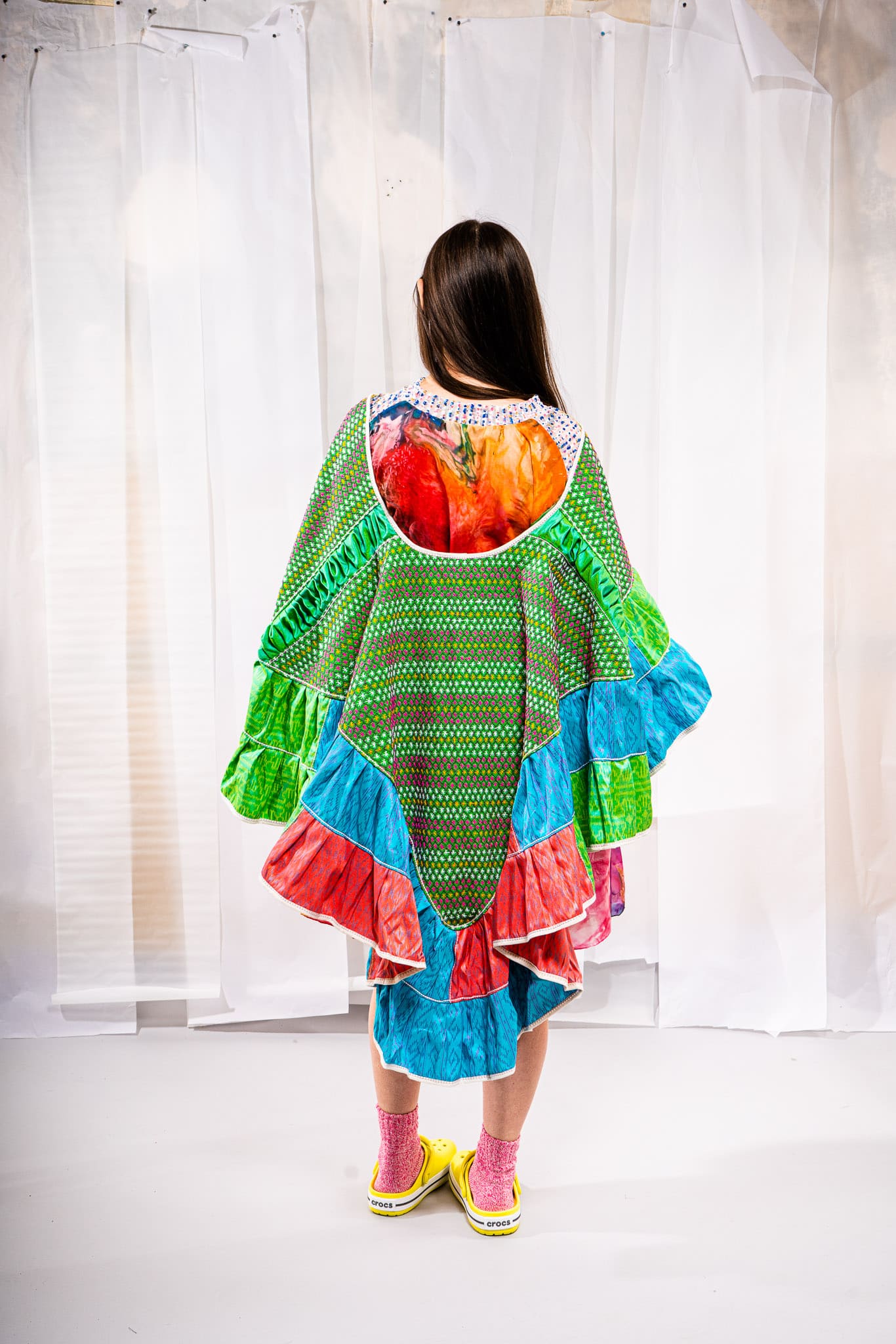
Silk in Slow Fashion: A Symphony of Elegance and Ethos
Thai Silk embodies the spirit of slow fashion – a harmonious blend of artistry, sustainability, and ethical consciousness. Its fluid grace and vibrant hues sing a siren’s song, beckoning us to indulge in hand-sewn costumes that defy the ephemeral whims of fast fashion.
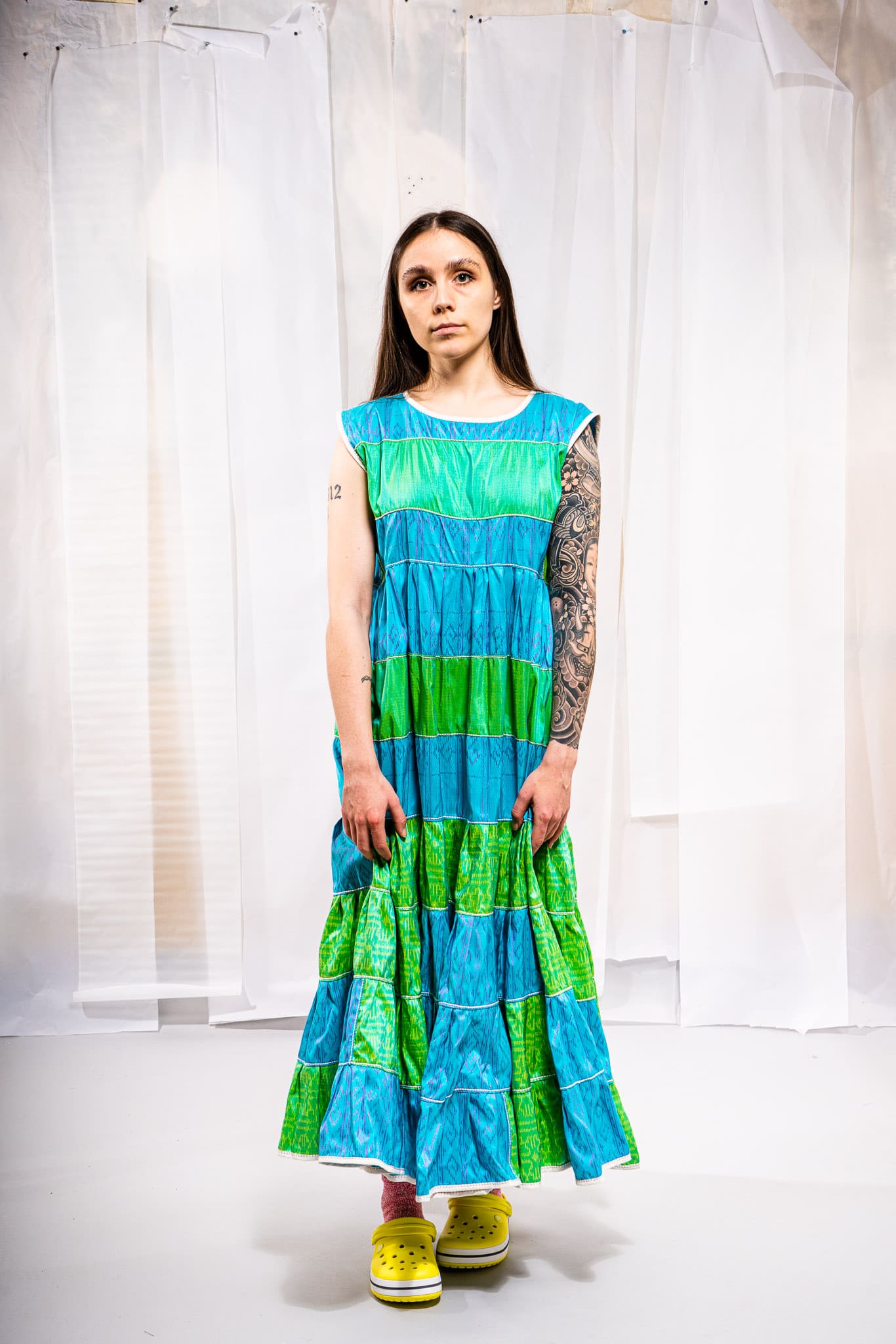
Thai Silk’s flowing grace and breathtaking beauty hold the key to revolutionizing slow fashion. Designers worldwide are embracing this ancient textile, creating innovative garments that challenge the boundaries of fashion while paying homage to its rich heritage.

The fluidity of Thai Silk offers unparalleled versatility, inspiring designers to create novel, future-forward garments. From ethereal gowns to avant-garde ensembles, the fabric’s draping qualities and vibrant hues breathe new life into contemporary fashion.

As we drape ourselves in Thai Silk, we celebrate a legacy of slow fashion, where beauty coexists with environmental stewardship and respect for the artisans who pour their souls into each creation. Together, we can contribute to a more equitable and sustainable fashion industry that honors the earth and its inhabitants.

In choosing Thai Silk, we embrace not only its opulence but also its sustainable and ethical ethos. As connoisseurs of fashion, our support for Thai Silk and slow fashion initiatives can transform the industry into one that cherishes the environment, its artisans, and the timeless elegance that springs forth from their communion.

